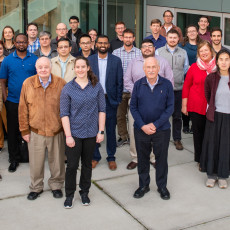Software Interfaces & Usability
Scientific software often emerges as an effort to solve a specific need and evolves with the complex and iterative scientific inquiry and needs of the project. Software requires ongoing usability and user experience (UX) improvements in order to be a reliable, sustainable resource for user communities. However, traditional software engineering and UX methods or processes cannot be directly applied to scientific projects because of the flexible and fluid nature of work and personnel roles; this has been a barrier for wider adoption.
The CS Area engages in user research methods on scientific projects. We help scientific software teams and organizations produce more usable software systems and data infrastructures. Our research and development includes foundational ethnographic inquiries of work and organizational practices, generative and exploratory design efforts, and evaluations of interfaces, systems, and practices. Our impacts range from the design and refinement of graphical and command line user interfaces as well as strategic insights that help teams better understand and meet the needs of their user communities.
Projects
ESS-DIVE
The Environmental Systems Science Data Infrastructure for a Virtual Ecosystem (ESS-DIVE) is a data repository for Earth and environmental sciences. We collect, store, manage, and share Earth and environmental systems data created through research sponsored by the U.S. Department of Energy. A repository is only useful if it is used to store data. The repository features and design are determined through extensive useability interviews and testing to ensure that it is enabling our target users. Contact: Shreyas Cholia, the ESS-DIVE team
Institute for the Design of Advanced Energy Systems (IDAES)
LBNL leads the software development team to ensure timely, reliable, documented, usable and transparent releases of the Institute for the Design of Advanced Energy Systems (IDAES) project. Contact: Dan Gunter the IDAES team
NAWI WaterTAP
LBNL leads the software development team to ensure timely, reliable, documented, usable and transparent releases of the Institute for the Design of Advanced Energy Systems (IDAES) project. Contact: Keith Beattie
PARETO
We lead the software release management for the Produced Water Application for Beneficial Reuse, Environmental Impact and Treatment Optimization (PARETO), which develops an open-source, optimization-based, downloadable and executable produced water decision-support application that can be run by upstream operators, midstream companies, technology providers, water end users, research organizations and regulators. Contact: Keith Beattie
News

Berkeley Lab’s PARETO Wins Award for Engineering Innovation
The Produced Water Optimization Program (PARETO) framework, a collaboration between Lawrence Berkeley National Laboratory and the National Energy Technology Laboratory, was named a winner in Hart Energy’s 2022 Special Meritorious Awards for Engineering Innovation for its water management capabilities. Read More »

IDAES Honored with R&D100 Award
The U.S. Department of Energy’s (DOE’s) Institute for the Design of Advanced Energy Systems (IDAES) is the winner of a prestigious 2020 R&D100 award, which recognizes the developers of the 100 most technologically significant products introduced into the marketplace in the last year. Read More »







 Instagram
Instagram YouTube
YouTube